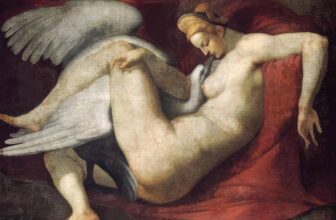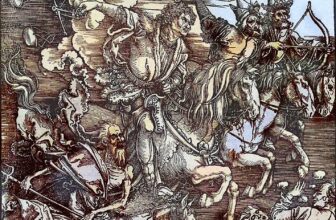What are Jacopo Pontormo’s Famous Paintings
Shopping Ads: Invest in Hidden Masterpiece: Rare Antique Oil Paintings For Sale. Limited Originals Available 💰😊 Are you looking for authentic hidden masterpiece? Explore old master antique oil paintings from the Renaissance and Baroque eras. From 16th-century portraits to 18th-century landscapes. Authenticity guaranteed, Old Master antique oil paintings for sale. Shop Now! 🎨 Renaissance And Baroque Art Old Master Portrait Paintings Landscape Antique PaintingsIn the early 16th century, Florence was a place where art didn’t simply decorate walls , it defined identity, power, and the pulse of a city. Among the towering names of the Renaissance , Leonardo da Vinci, Michelangelo, Raphael , there was a quieter, more elusive figure whose work would break from the classical balance of his time and venture into something stranger, more expressive, and haunting. His name was Jacopo Pontormo.
Born Jacopo Carucci in 1494 in the small Tuscan town of Pontorme (from which he took his nickname), Pontormo was an artist whose career coincided with the late High Renaissance but whose style defied its symmetry and serenity. His art swirled with elongated figures, acidic yet luminous colors, and emotional tension. In many ways, Pontormo became a pioneer of Mannerism, a style that emerged after the perfection of the Renaissance had been reached , a style that dared to be unsettling, ambiguous, and even otherworldly.
The Life and Story of Jacopo Pontormo
Pontormo was orphaned at an early age, losing his father Bartolomeo at age ten. Left without a strong family foundation, he found one in the studios of Florence’s most prominent artists. He apprenticed under Leonardo da Vinci, Mariotto Albertinelli, and Piero di Cosimo, and later studied with Andrea del Sarto, one of the most respected painters in Florence. This variety of influences planted in him a rare flexibility of style , he could absorb techniques and moods from his masters but twist them into something uniquely his own.
While his peers sought balance and harmony in their compositions, Pontormo seemed to be searching for restlessness, for a depiction of human fragility. His figures bend and float rather than stand and stride. His faces often look distant, anxious, or lost in thought. This wasn’t merely stylistic rebellion; it reflected Pontormo’s own personality. According to the 16th-century art historian Giorgio Vasari, Pontormo was introverted, eccentric, and plagued by a sense of isolation. He reportedly lived much of his later life in near-seclusion, suspicious of strangers, keeping meticulous records in a personal diary , which survives today as a rare window into the mind of a Renaissance artist.
What Jacopo Pontormo is Known For
Pontormo is most famous for being one of the defining painters of Mannerism, the movement that bridged the High Renaissance and the Baroque. Mannerism rejected the strict rules of perspective and proportion perfected by earlier artists, instead favoring:
Elongated bodies and limbs that often defy natural anatomy.
Unusual, luminous color palettes , pinks, pale blues, greens, and oranges , that feel both dreamlike and disquieting.
Compressed or ambiguous space where figures sometimes seem to float.
Emotional expressiveness that hints at anxiety, grief, or spiritual longing.
Pontormo’s paintings often show religious scenes, but not in the calm, orderly way of the Renaissance. Instead, his biblical characters feel like participants in an intense drama, as if their emotions could spill out beyond the canvas.
Pontormo’s Most Famous Paintings
Several works by Pontormo stand as landmarks of Italian Mannerism. Here are his most celebrated pieces:
The Deposition from the Cross (1528) – Santa Felicita, Florence
This is perhaps Pontormo’s masterpiece. Painted for the Capponi Chapel, it depicts the moment after Christ has been taken down from the cross. Unlike traditional versions that include the cross itself, Pontormo removes all background elements, focusing entirely on the swirling movement of the figures. They are arranged in an almost circular motion, draped in brilliant, otherworldly colors , pinks, blues, and yellows , as if suspended in air. The absence of clear spatial grounding adds to the sense of spiritual weightlessness.The Visitation (1528–1529) – San Michele, Carmignano
This work shows the meeting of the Virgin Mary and Elizabeth, both pregnant with Jesus and John the Baptist. The scene is charged with a quiet intensity , the figures are elongated, their robes flowing with sculptural grace. Pontormo uses deep, almost iridescent colors that make the figures glow against the plain background.Joseph in Egypt (1518) – National Gallery, London
Part of a series painted for the marriage of Filippo Strozzi, this work blends biblical narrative with courtly elegance. Pontormo paints a bustling Egyptian scene, but his figures remain statuesque and elongated, foreshadowing his later Mannerist style.Portrait of a Halberdier (1528–1530) – Getty Museum, Los Angeles
A striking portrait of a young soldier, possibly Francesco Guardi, wearing a vivid red tunic and holding a halberd. The youth’s expression is poised yet distant, a hallmark of Pontormo’s psychological subtlety.Portrait of Cosimo de’ Medici the Elder – Uffizi Gallery, Florence
While more restrained than his religious works, Pontormo’s portraits convey a quiet psychological depth. His sitters seem to be holding something back, caught in a private world.
The Most Expensive Painting by Jacopo Pontormo
While Pontormo’s works are rare on the open market (most are held in museums or churches), the most expensive sale attributed to him is “Portrait of a Halberdier”, which the Getty Museum acquired in 1989 for a reported $35.2 million (adjusted for inflation, this would be well over $80 million today). At the time, it was the most expensive painting ever purchased by a museum. This reflects both the rarity of Pontormo’s works in private hands and the growing recognition of his importance in art history.
How Many Paintings Did Jacopo Pontormo Create?
Exact numbers are difficult to pin down because Pontormo was selective in his commissions, and some works have been lost over time. Art historians generally agree that around 30–40 paintings survive today, along with numerous drawings and preparatory sketches. Many of his frescoes have been damaged or destroyed , including parts of his ambitious fresco cycle for the San Lorenzo cloister in Florence, which deteriorated beyond recognition due to humidity.
Where to See Jacopo Pontormo’s Paintings
Pontormo’s works are spread across Italy and the world, but the largest concentration remains in Florence, his home city. Here are key locations:
Santa Felicita, Florence – The Deposition from the Cross
San Michele, Carmignano – The Visitation
Uffizi Gallery, Florence – Several portraits, including Cosimo de’ Medici the Elder
Palatine Gallery, Palazzo Pitti, Florence – Religious scenes and portraits
National Gallery, London – Joseph in Egypt and related works
Getty Museum, Los Angeles – Portrait of a Halberdier
Art Institute of Chicago – Portrait of a Man with a Book
Many of his smaller works and drawings can be found in European and American collections, though his grand altarpieces are largely in situ in Italian churches.
Pontormo’s Legacy
Pontormo’s legacy is tied to his role as one of the originators of Mannerism, alongside contemporaries like Rosso Fiorentino. In the centuries after his death in 1557, his style fell somewhat out of favor , overshadowed first by the Baroque grandeur of Caravaggio and Rubens, then by the classical revival of the 18th century. However, the 20th century brought a reawakening of interest in Pontormo. Modern audiences, accustomed to abstraction and psychological intensity, began to see his art as profoundly modern in spirit.
Artists and scholars now admire Pontormo for:
His fearless break from tradition at a time when Renaissance ideals were considered perfection itself.
His unique emotional range , from ethereal calm to almost surreal disorientation.
His influence on later painters, especially Bronzino, his pupil, who carried forward elements of Mannerist portraiture.
Pontormo’s diary, with its details about his daily meals, illnesses, and anxieties, adds an intimate human dimension to his legacy. It reminds us that behind the luminous colors and elongated saints was a man wrestling with solitude, faith, and the uncertainties of his age.
The Final Years
In his final decade, Pontormo worked on what would have been one of his greatest projects , a vast fresco cycle of the Last Judgment for the choir of San Lorenzo in Florence. Unfortunately, these works were destroyed in the 18th century, leaving only preparatory drawings and Vasari’s descriptions. Pontormo died in 1557, and Bronzino wrote an epitaph honoring his master’s skill and singular vision.
Why Pontormo Still Matters
In a world where Renaissance art often conjures images of perfect balance and serene Madonnas, Pontormo reminds us that the 16th century was also an age of uncertainty, political turmoil, and personal doubt. His paintings capture a spiritual and emotional turbulence that feels remarkably contemporary. The way his figures seem caught between heaven and earth, between movement and stillness, mirrors our own human condition.
Today, standing before The Deposition from the Cross in Santa Felicita, you can still feel that unsettling beauty , the kind that refuses to let you simply admire it and move on. Pontormo’s art asks you to linger, to feel the tension, to recognize that perfection is not the only path to greatness.
| Category | Details |
|---|---|
| Birth | 1494, Pontorme, Italy |
| Death | 1557, Florence |
| Known For | Pioneer of Mannerism, emotionally charged religious and portrait paintings |
| Most Famous Work | The Deposition from the Cross (Santa Felicita, Florence) |
| Most Expensive Painting | Portrait of a Halberdier – Getty Museum, $35.2 million (1989) |
| Surviving Works | ~30–40 paintings plus drawings |
| Main Locations of Art | Florence, Carmignano, London, Los Angeles, Chicago |
| Legacy | Influenced Bronzino and later artists; rediscovered and celebrated in the 20th century |




